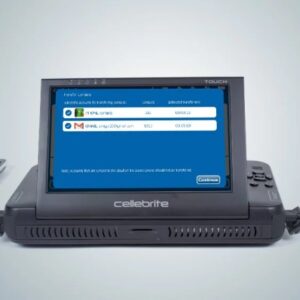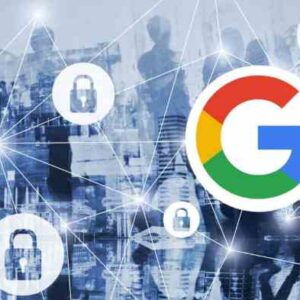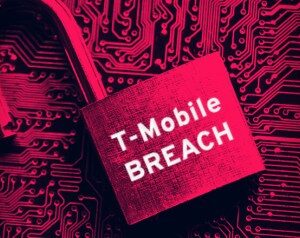IoT device definition: It’s more than just a smart fridge, people! We’re diving deep into the heart of the Internet of Things, exploring the gadgets, gizmos, and sensors that make our increasingly connected world tick. From the tiny microcontrollers humming away inside your fitness tracker to the powerful processors driving industrial automation, we’ll unpack the essential components, communication protocols, and real-world applications that define these ever-evolving devices. Get ready to unravel the magic behind the connected revolution.
This exploration will cover everything from the nuts and bolts of IoT device hardware – the sensors, processors, and communication modules – to the diverse applications across various industries. We’ll delve into security considerations, power management strategies, and the exciting future advancements shaping this rapidly evolving field. Think smart homes, connected cars, and industrial automation – it’s all interconnected, and we’re here to break it down.
Defining IoT Devices
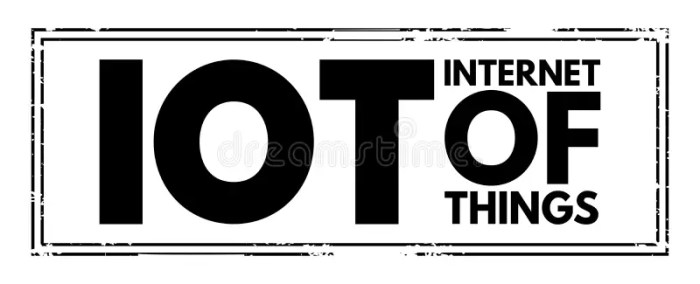
Source: dreamstime.com
So, you’re curious about the inner workings of those ever-present Internet of Things (IoT) devices? Let’s dive into the nitty-gritty, breaking down what makes them tick. From your smart fridge to your fitness tracker, they all share a fundamental architecture.
Core Components of IoT Devices
At the heart of every IoT device lies a carefully orchestrated blend of hardware and software. Think of it as a tiny, specialized computer dedicated to a specific task. The essential hardware components typically include a microprocessor or microcontroller – the brains of the operation – responsible for processing data and executing instructions. This is often accompanied by memory (RAM and flash memory) to store data and program instructions. A power source, whether it’s a battery or mains power, fuels the entire system. Finally, a communication interface allows the device to connect to the internet or other networks.
Sensors in IoT Devices
IoT devices wouldn’t be very “smart” without sensors. These are the eyes and ears of the system, collecting data from the real world. Different types of sensors cater to various needs. For instance, temperature sensors measure ambient temperature, humidity sensors monitor moisture levels, accelerometers detect motion, and light sensors measure light intensity. Pressure sensors, GPS modules, and even microphones and cameras are commonly integrated depending on the device’s function. The data collected by these sensors is the lifeblood of the IoT, providing the raw information that fuels decision-making and automation.
Communication Protocols in IoT Devices
The collected sensor data needs to be transmitted somewhere, and this is where communication protocols come into play. These are the languages that IoT devices use to “talk” to each other and to the internet. Wi-Fi is a popular choice for its wide range and high data rates, ideal for devices needing to transmit large amounts of data regularly. Bluetooth, on the other hand, excels in short-range, low-power applications, perfect for wearable devices or smaller sensors. Zigbee is a low-power, low-data-rate protocol well-suited for mesh networks, allowing many devices to communicate efficiently over a larger area. Other protocols like LoRaWAN and NB-IoT cater to long-range, low-power applications, ideal for smart city deployments or agricultural monitoring.
Comparison of Communication Protocols
| Protocol | Range | Power Consumption | Data Rate |
|---|---|---|---|
| Wi-Fi | Up to 100 meters (indoors) | Moderate to High | High |
| Bluetooth | Up to 10 meters | Low | Moderate |
| Zigbee | Up to 100 meters (mesh network) | Low | Low |
| LoRaWAN | Kilometers | Very Low | Low |
| NB-IoT | Kilometers | Very Low | Low |
IoT Device Functionality and Applications
The Internet of Things (IoT) isn’t just a buzzword; it’s a revolution quietly reshaping how we interact with the world. IoT devices, those everyday objects embedded with sensors and connectivity, are far more than just gadgets. They’re the workhorses of a data-driven future, collecting, processing, and transmitting information to improve efficiency, safety, and convenience across countless industries. Understanding their functionality and diverse applications is key to grasping the true impact of this technological shift.
IoT devices operate on a fundamental principle: sensing, processing, and communicating. They begin by sensing data from their environment – temperature, pressure, location, light levels, or even human presence. This raw data is then processed within the device itself, often involving simple calculations or filtering to remove noise. Finally, the processed data is transmitted wirelessly, typically via Wi-Fi, Bluetooth, cellular networks, or LPWAN technologies, to a central system for analysis and action. This central system could be a cloud server, a local network, or even another IoT device. The complexity of this workflow varies drastically depending on the device’s capabilities and intended purpose.
Diverse IoT Applications Across Industries
The applications of IoT devices are remarkably broad. In healthcare, wearable sensors monitor patient vital signs, transmitting data to doctors in real-time for proactive care. Imagine a heart monitor seamlessly sending data to a physician, alerting them to any irregularities before they become critical. In agriculture, smart sensors embedded in soil monitor moisture levels and nutrient content, optimizing irrigation and fertilization for improved crop yields. Picture a farmer receiving real-time alerts about soil conditions on their smartphone, allowing for precise and efficient water management. Manufacturing benefits from IoT through predictive maintenance, where sensors on machinery detect anomalies, preventing costly breakdowns before they occur. Think of a factory floor where sensors on machines constantly monitor their performance, predicting potential failures and scheduling maintenance proactively, minimizing downtime and maximizing productivity.
IoT Data Processing Workflow
The typical workflow of data processing in an IoT device involves several key stages. First, data acquisition occurs through various sensors. This raw data is then pre-processed, often involving filtering, cleaning, and basic calculations to remove noise and irrelevant information. Next, the data undergoes feature extraction, where relevant information is identified and extracted. This data is then encoded for transmission, often using efficient compression techniques to minimize bandwidth usage. Finally, the encoded data is transmitted wirelessly to a central system. The entire process is often optimized for power efficiency, particularly in battery-powered devices.
Smart Home IoT Device Use Cases
Smart homes are a prime example of IoT’s transformative potential. The following five use cases illustrate the versatility and benefits of IoT in this context:
- Smart Thermostat: This device learns your temperature preferences and automatically adjusts the heating and cooling system to optimize energy consumption and comfort. It can also be controlled remotely through a smartphone app, allowing you to adjust the temperature before you even arrive home.
- Smart Lighting: Smart bulbs can be controlled individually or in groups, allowing for customized lighting scenes and automated scheduling. This enhances security by simulating occupancy even when you’re away and contributes to energy savings.
- Smart Security System: This system uses various sensors, such as motion detectors, door/window sensors, and cameras, to monitor your home for intruders. It can alert you to any suspicious activity and even integrate with law enforcement.
- Smart Locks: These locks allow for keyless entry using smartphone apps or other methods, providing convenience and enhanced security. They also allow for remote access granting entry to guests or service providers.
- Smart Appliances: Refrigerators, washing machines, and ovens can be connected to the internet, allowing for remote control and monitoring. This can include features like pre-heating your oven remotely or receiving alerts when your laundry is finished.
LPWAN vs. High-Bandwidth Devices
Low-Power Wide-Area Network (LPWAN) devices are designed for long-range communication with minimal power consumption. They are ideal for applications requiring infrequent data transmission over large distances, such as environmental monitoring or asset tracking. In contrast, high-bandwidth devices prioritize data speed and capacity, suitable for applications needing real-time data streams, like video surveillance or high-definition audio transmission. The choice between LPWAN and high-bandwidth devices depends heavily on the specific application requirements, balancing the need for range, power efficiency, and data throughput.
Security Considerations in IoT Devices: Iot Device Definition

Source: theiotpad.com
The seemingly simple smart devices enriching our lives – from smartwatches to smart refrigerators – introduce a complex web of security challenges. Their interconnected nature and often limited processing power create vulnerabilities that malicious actors can exploit, potentially compromising personal data, disrupting services, and even causing physical harm. Understanding these vulnerabilities and implementing robust security measures is crucial for a safe and secure IoT ecosystem.
Potential Security Vulnerabilities in IoT Devices and Networks
IoT devices, due to their design and deployment, are inherently susceptible to various security threats. Many are designed with minimal processing power and memory, limiting their ability to run complex security software. This often results in weak authentication mechanisms, leaving them vulnerable to brute-force attacks. Furthermore, the use of default passwords or easily guessable credentials is alarmingly common. Network vulnerabilities are also prevalent; unsecured networks, lack of encryption, and outdated firmware are frequent entry points for attackers. Finally, the sheer volume and diversity of IoT devices makes comprehensive security management a significant challenge. A single compromised device can act as a gateway to an entire network, creating a cascading effect of vulnerabilities.
Common Security Protocols and Best Practices
Several security protocols and best practices aim to mitigate the risks associated with IoT devices. Strong authentication, such as multi-factor authentication (MFA), is essential to prevent unauthorized access. Data encryption, both in transit and at rest, protects sensitive information from eavesdropping and unauthorized access. Regular firmware updates are crucial for patching known vulnerabilities and improving security features. The use of firewalls and intrusion detection systems (IDS) can help monitor network traffic and identify suspicious activity. Implementing access control lists (ACLs) restricts access to sensitive data and functions based on user roles and privileges. Finally, employing secure coding practices during the device’s development phase is vital to minimize inherent vulnerabilities.
Recommendations for Securing IoT Devices
Securing IoT devices requires a multi-faceted approach. Prioritizing firmware updates is paramount; manufacturers should release regular updates to address security flaws, and users should promptly install them. Implementing strong passwords and using MFA significantly enhances security. Regularly reviewing network configurations and access controls ensures that only authorized devices and users can access the network. Choosing reputable manufacturers and devices with strong security features is crucial. Finally, educating users about potential threats and best practices helps create a more secure environment. For example, a smart home system should be segmented from other critical networks to limit the impact of a potential breach.
Securing an IoT Device: A Flowchart
Imagine a flowchart depicting the process of securing an IoT device. The first step would be Initial Setup: This involves selecting a strong password, configuring the device’s network settings securely (using a separate network if possible), and enabling any available security features (e.g., encryption). The next step is Firmware Updates: Checking for and installing any available firmware updates to patch vulnerabilities. Then, Network Security: Configuring the network with appropriate security protocols (e.g., WPA2/3 encryption). Following this is Access Control: Setting up user accounts with appropriate permissions and utilizing MFA whenever possible. Finally, Ongoing Maintenance: This involves regularly monitoring the device’s security logs, checking for updates, and reviewing security settings to ensure continued protection. The flowchart would visually represent this sequential process, highlighting the importance of each step in establishing and maintaining a secure IoT environment.
Power and Connectivity Aspects of IoT Devices
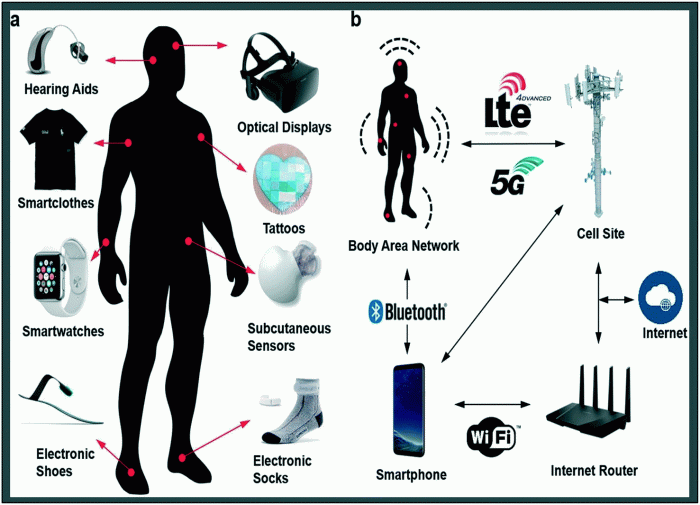
Source: rsc.org
The seemingly simple act of powering and connecting an IoT device is actually a complex engineering challenge, particularly when considering the diverse environments where these devices operate. From the smallest sensor embedded in a smart home appliance to a remote weather station in a harsh desert climate, power sources and connectivity methods must be carefully selected and optimized to ensure reliable and long-term operation. This section delves into the intricacies of powering and keeping these devices online, highlighting the trade-offs and innovations driving the field.
Powering IoT devices presents a unique set of challenges. The ideal power source depends heavily on the device’s application, size, and location. Balancing energy efficiency with operational lifespan is crucial for minimizing maintenance and maximizing device longevity.
Power Sources for IoT Devices
Choosing the right power source is paramount for IoT device design. The available options each present advantages and disadvantages. Batteries, while portable and reliable, have limited lifespans and require eventual replacement. Solar power offers a sustainable solution, but its effectiveness depends on consistent sunlight exposure. Energy harvesting techniques, meanwhile, scavenge energy from ambient sources like vibrations or thermal gradients, offering a potentially maintenance-free solution, but with typically lower power output.
- Batteries: Commonly used for their portability and reliability, but limited by lifespan and require eventual replacement. Different battery chemistries (e.g., lithium-ion, alkaline) offer varying energy densities and lifespans, impacting device design choices.
- Solar Power: A sustainable alternative, but relies on consistent sunlight availability. The efficiency of solar panels and the device’s power consumption heavily influence the practicality of this option. Consider a smart irrigation system: solar power is ideal due to its outdoor location and the abundance of sunlight.
- Energy Harvesting: This approach involves capturing energy from ambient sources like vibrations (kinetic energy harvesting), thermal gradients (thermoelectric generators), or radio waves (RF energy harvesting). While offering a potentially maintenance-free solution, the power output is generally low, limiting application to low-power devices. Think of a sensor embedded in a bridge, powered by vibrations from passing traffic.
Connectivity Challenges in Remote Environments
Maintaining reliable connectivity for IoT devices in remote or challenging environments presents significant obstacles. Factors such as distance from base stations, geographical barriers (mountains, forests), and atmospheric conditions (rain, snow) can severely impact signal strength and data transmission. Furthermore, power constraints often limit the use of high-power transmitters, exacerbating the problem.
Power Consumption Optimization Techniques
Minimizing power consumption is crucial for extending the operational life of battery-powered IoT devices. Several techniques can be employed to achieve this goal. These range from using low-power hardware components and efficient communication protocols to implementing sophisticated power management strategies.
- Low-power hardware: Utilizing microcontrollers and sensors with low power consumption is fundamental. Selecting components specifically designed for low-power applications significantly reduces energy drain.
- Efficient communication protocols: Protocols like LoRaWAN and Sigfox are designed for long-range, low-power communication, ideal for IoT devices in remote locations. These protocols prioritize energy efficiency over high bandwidth.
- Power management strategies: Implementing techniques like duty cycling (periodically turning components on and off) and sleep modes can significantly reduce energy consumption without compromising functionality. Smart sensors, for instance, might only transmit data when a significant change is detected.
The Role of Network Gateways
Network gateways act as crucial intermediaries, bridging the communication gap between IoT devices and the cloud. They aggregate data from multiple devices, often employing protocols optimized for low-power, long-range communication. Gateways then translate this data into formats compatible with cloud platforms, enabling remote monitoring, control, and data analysis. Essentially, the gateway acts as a translator and aggregator, making the diverse world of IoT devices accessible to the cloud. Consider a smart city scenario where numerous sensors monitor traffic, air quality, and lighting. A network gateway collects and consolidates this data before transmitting it to a central server for processing and analysis.
The Future of IoT Device Development
The Internet of Things (IoT) is rapidly evolving, driven by advancements in several key areas. We’re moving beyond simple connected devices to a world of intelligent, self-managing systems that seamlessly integrate into our lives. This evolution presents both incredible opportunities and significant challenges for developers and businesses alike. The future of IoT device development is a dynamic landscape shaped by technological leaps and the ever-increasing demand for smarter, more connected solutions.
The convergence of several technological trends is fundamentally reshaping the landscape of IoT development. Miniaturization of components allows for smaller, more energy-efficient devices, while advancements in materials science are leading to more durable and versatile devices capable of operating in harsh environments. The increasing affordability of sensors and processing power is making IoT solutions accessible to a wider range of applications and users.
Emerging Trends and Technologies
Several key trends are driving innovation in IoT device development. Low-power wide-area networks (LPWANs) like LoRaWAN and NB-IoT are expanding the reach of IoT deployments, enabling connectivity in remote areas with limited infrastructure. Edge computing, processing data closer to the source, is reducing latency and improving responsiveness. Blockchain technology offers enhanced security and data integrity for IoT networks, while AI and ML are transforming the capabilities of IoT devices, allowing them to learn, adapt, and make decisions autonomously. The integration of these technologies is paving the way for more sophisticated and interconnected IoT ecosystems.
Challenges and Opportunities of Widespread IoT Adoption, Iot device definition
The widespread adoption of IoT devices presents both exciting opportunities and significant challenges. On the opportunity side, the potential for increased efficiency, improved safety, and enhanced convenience across various sectors is immense. Smart agriculture, for instance, uses IoT sensors to optimize irrigation and fertilization, leading to higher crop yields and reduced resource consumption. In healthcare, wearable sensors can monitor patients’ vital signs remotely, enabling early detection of health issues and improved patient care. However, challenges remain. Data security and privacy concerns are paramount, requiring robust security measures to protect sensitive information. The sheer volume of data generated by IoT devices necessitates efficient data management and analytics capabilities. Furthermore, ensuring interoperability between different IoT devices and platforms is crucial for seamless integration and scalability. Addressing these challenges is vital for realizing the full potential of the IoT.
Impact of AI and Machine Learning on IoT Devices
Advancements in AI and ML are fundamentally altering the functionality of IoT devices. AI-powered devices can analyze data in real-time, identify patterns, and make informed decisions without human intervention. For example, smart thermostats learn user preferences and adjust temperature settings accordingly, optimizing energy consumption. In industrial settings, AI-powered predictive maintenance systems analyze sensor data from machinery to predict potential failures, minimizing downtime and reducing maintenance costs. Machine learning algorithms enable IoT devices to adapt to changing conditions and improve their performance over time. This ability to learn and adapt is transforming IoT from a collection of static sensors to a network of intelligent agents capable of autonomous operation.
Impact of 5G and Beyond on IoT Device Capabilities
The rollout of 5G and the anticipated arrival of 6G will dramatically enhance the capabilities of IoT devices. 5G’s significantly higher bandwidth and lower latency enable real-time data transmission and processing, supporting applications requiring high speed and low delay, such as autonomous vehicles and remote surgery. The increased network capacity allows for a greater number of connected devices, paving the way for massive IoT deployments. Furthermore, 5G’s improved reliability and security features are crucial for mission-critical IoT applications. 6G is expected to further enhance these capabilities, offering even higher bandwidth, lower latency, and enhanced security, enabling the development of even more sophisticated and complex IoT applications. Imagine a world where autonomous drones monitor infrastructure, self-driving cars navigate seamlessly, and smart cities optimize resource allocation in real-time – all powered by the seamless connectivity and speed of 5G and beyond. This is not science fiction; it’s the rapidly approaching reality of a hyper-connected world.
Last Point
So, there you have it – a whirlwind tour through the fascinating world of IoT device definition. From understanding the core components and communication protocols to grasping the security implications and future trends, we’ve covered the essentials. The Internet of Things isn’t just a buzzword; it’s the backbone of a more connected, efficient, and innovative future. And now, you’re equipped with the knowledge to navigate this exciting landscape.

